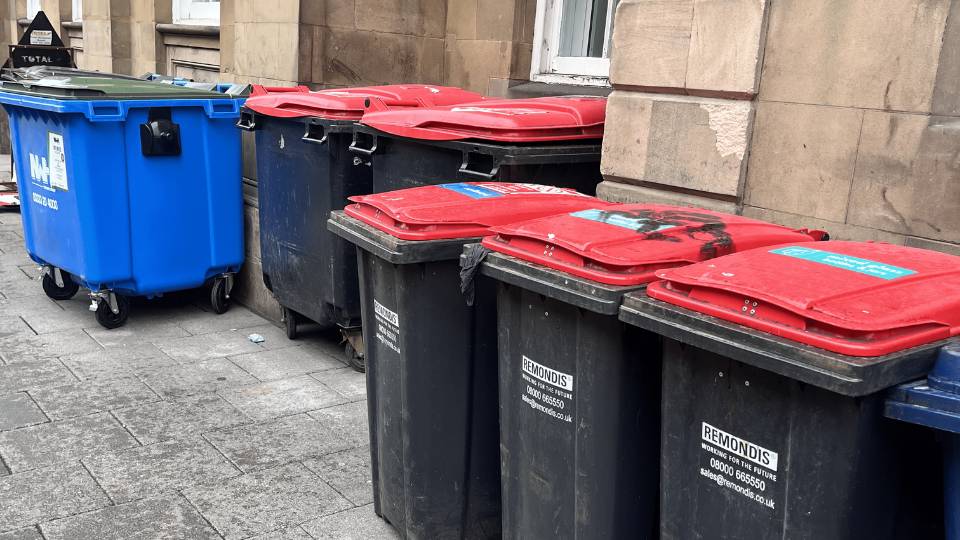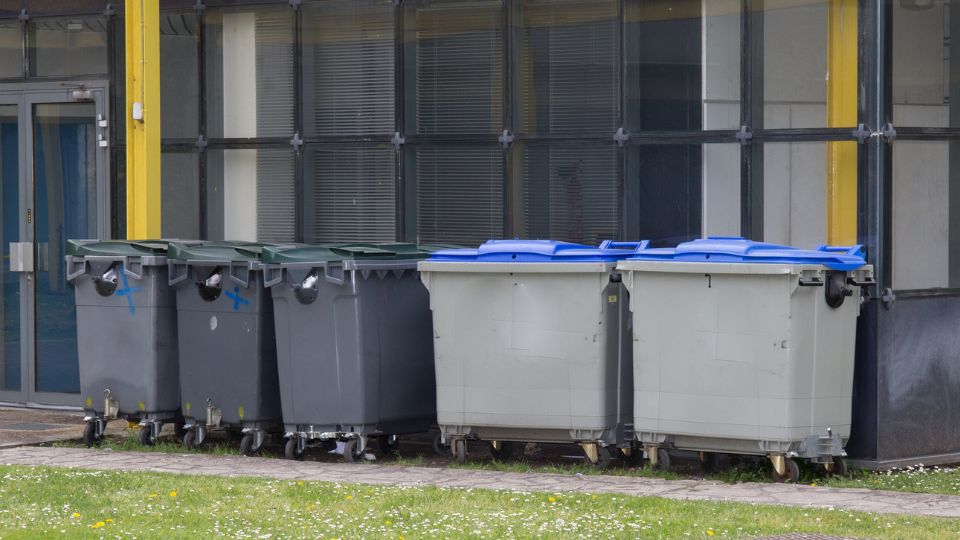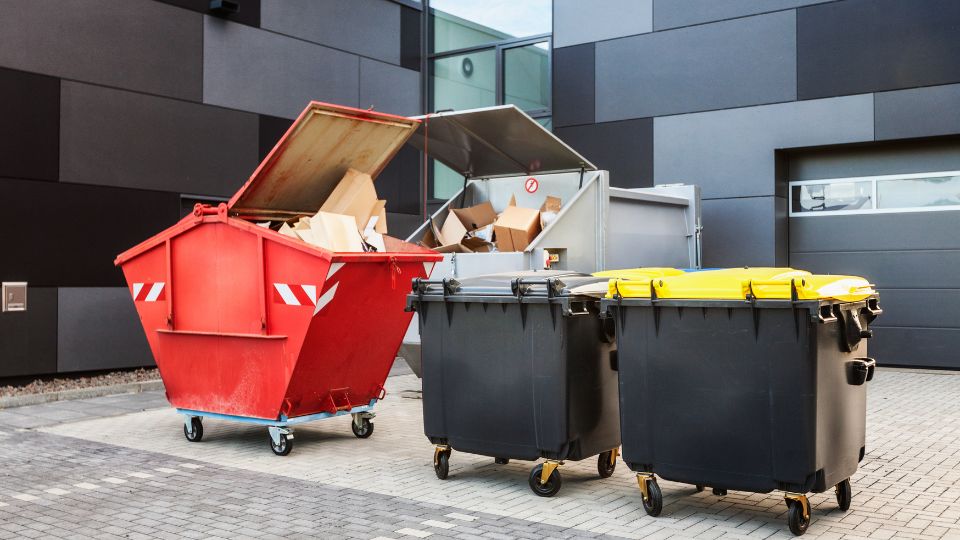
Quick Summary:
- Use designated bins for general waste, dry mixed recycling, glass waste, food waste, confidential waste, and e-waste to ensure proper disposal and recycling.
- Clearly label bins and educate staff on waste segregation practices to maintain efficiency and compliance.
- Schedule regular waste collection to prevent overflow and support a clean, sustainable business environment.
Efficiently managing commercial waste is key for any organisation. It ensures you comply with regulations and promote sustainability.
Knowing which commercial bins to use for each type of waste keeps things organised and environmentally friendly.
Here’s a simple guide to help you figure out which bins you need for different waste types.
Table of Contents
- General Waste
- Dry Mixed Recycling
- Glass Recycling
- Food Waste
- Confidential Waste
- E-Waste
- Key Points to Remember
- Conclusion
General Waste
General waste includes everyday items that can’t be recycled. This type of waste usually goes into black or grey wheelie bins.
Items in this category include:
- Non-recyclable packaging
- Non-recyclable plastics
Dry Mixed Recycling
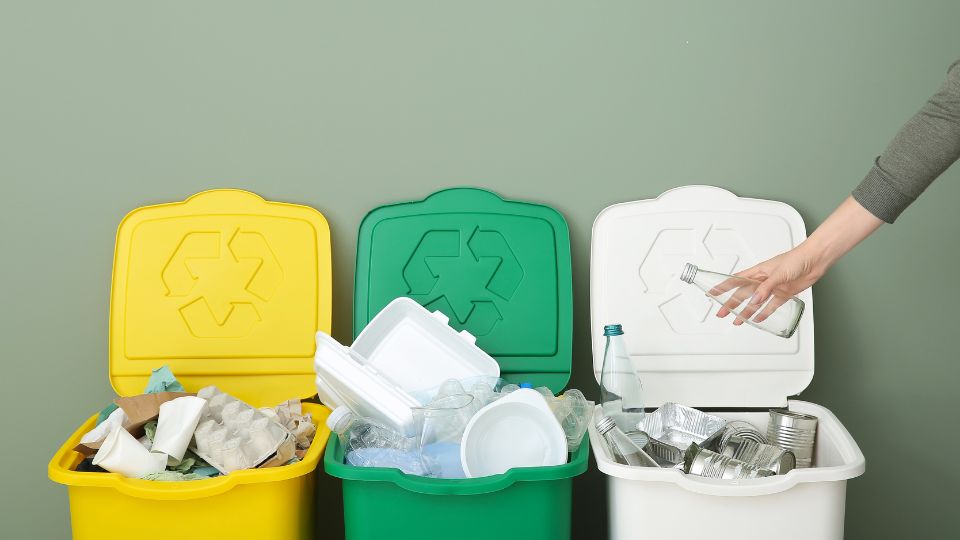
Dry mixed recycling waste needs to be sorted and placed into the right recycling bins. These materials can now go in together and are later sorted at a recycling facility. This has been introduced by the UK Government in order to make recycling an easier task.
Recyclable waste includes:
- Paper and Cardboard – Office paper, newspapers, magazines, and cardboard boxes.
- Plastics – Clean plastic bottles, containers, and packaging.
- Metals – Aluminum cans, tin cans, and other metal items.
Glass Recycling
You must now separate your glass recycling from other materials into its own dedicated bin. This is in order to comply with Simpler Recycling legislation.
Food Waste
Food waste, also known as organic waste, should have a dedicated bin. Many businesses use green bins for this.
However, food waste is typically converted into green energy and fertiliser through anaerobic digestion.
How Anaerobic Digestion Turns Food Waste into Energy
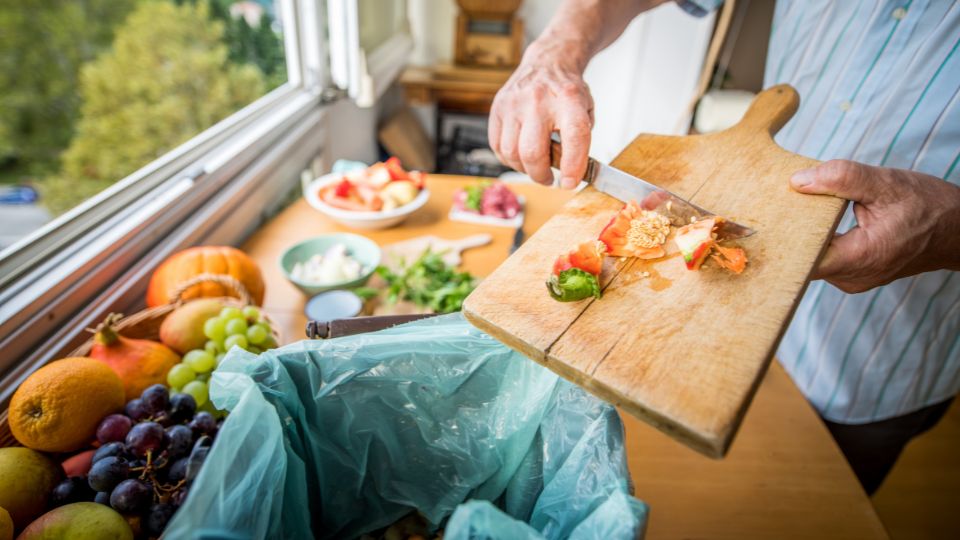
Anaerobic digestion (AD) is a powerful process for managing food waste and generating renewable energy. Here’s a quick look at how it works:
Collection and Pre-Treatment
Food waste is collected from businesses and transported to an AD facility. At the plant, any packaging and non-food materials are removed.
The remaining food waste is pre-treated—methods like microwaving, heating, or milling make it easier to break down.
Processing
The pre-treated waste enters an anaerobic digestion container, where microorganisms break it down in a sealed, oxygen-free environment.
The process is accelerated by maintaining an optimal temperature of around 35°C.
This breakdown occurs in four stages:
- Hydrolysis – Long-chain polymers are broken into smaller components.
- Acidogenesis – These components ferment, creating volatile fatty acids and other byproducts.
- Acetogenesis – Molecules are further digested, producing acetic acid, carbon dioxide, and hydrogen.
- Methanogenesis – Methane, the main component of biogas, is produced and captured for energy.
Utilisation of By-Products
The captured biogas is used for combined heat and power (CHP), a highly efficient way to generate electricity and heat.
It can also fuel vehicles or be used in small-scale biodigesters for cooking and heating, particularly in developing countries. The remaining digestate is repurposed as a fertiliser.
Why Anaerobic Digestion Matters
Anaerobic digestion addresses two major environmental concerns.
First, it reduces the amount of food waste sent to landfills, where it would otherwise release harmful gases that contribute to global warming.
Second, it provides a renewable energy source, reducing reliance on fossil fuels and lowering greenhouse gas emissions.
In the UK, AD currently fuels over 1 million homes. For businesses, converting food waste into energy is a crucial step towards sustainability.
Confidential Waste
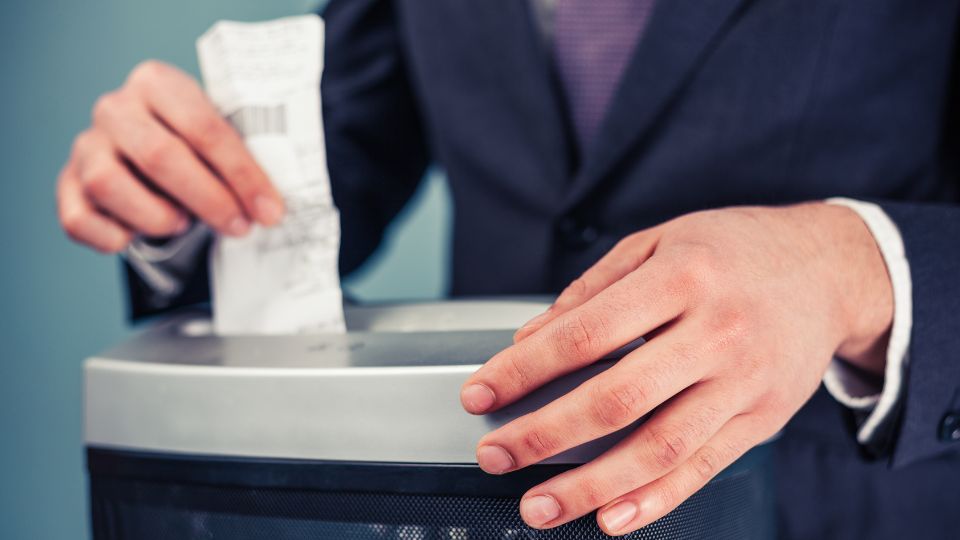
Confidential waste includes sensitive documents that need secure disposal. This type of waste should go into locked bins or shredders to keep information safe.
Examples include:
- Financial records
- Personal identification information
- Confidential business documents
E-Waste
Electronic waste (e-waste) covers discarded electronic devices. These shouldn’t go into general waste bins due to their potentially hazardous components. Use designated e-waste bins or take them to specialised recycling centres.
Examples include:
- Computers and laptops
- Mobile phones
- Printers and other peripherals
Key Points to Remember
- Label Your Bins – Clear labelling helps ensure waste is sorted correctly. Use labels and colour codes to distinguish between different waste types.
- Educate Your Staff – Make sure all employees understand the waste segregation policies and why proper waste disposal is important.
- Regular Collection – Schedule regular waste collection to avoid overflow and keep the environment clean.
Conclusion
Proper waste management is essential for any business.
By understanding which bins are needed for each waste type, you can improve sustainability practices and ensure compliance with waste disposal regulations.
Investing in the right bins and educating staff about waste types will make the process more efficient and eco-friendly.
For more information on business waste management and wheelie bins, check out our other blog posts.


